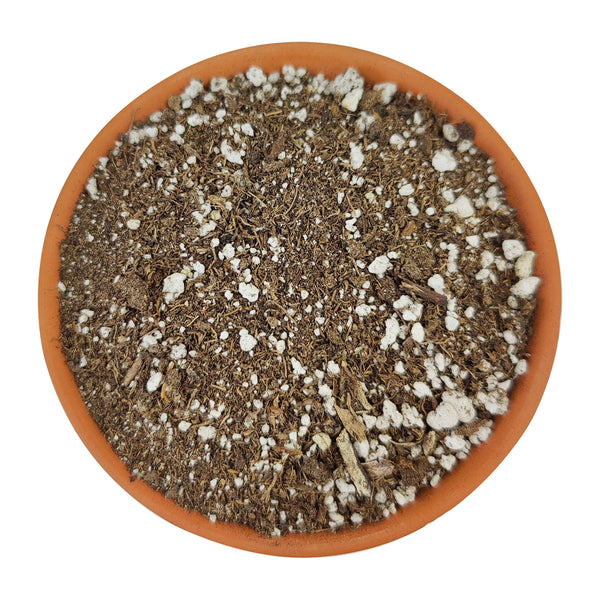The Ultimate Guide to Soil & Fertilizers for Succulents
- Succulent Garden

- Sep 6
- 2 min read
Choosing the right soil and knowing when to fertilize are two of the most critical factors in keeping your succulents healthy. While they are low-maintenance plants, using the wrong soil or over-fertilizing can quickly lead to disaster.
1. Soil: Why Drainage is Everything

The most common mistake new growers make is using regular potting soil. This type of soil retains too much moisture, which can suffocate the roots and lead to root rot—the number one killer of succulents.
What to Look For: The ideal succulent soil mix is one that is well-draining and well-aerated. It should have a gritty texture and allow water to pass through quickly.
Pre-made Mixes: The easiest option is to buy a commercial "Cactus and Succulent Mix" from your local garden center. These mixes are specifically designed for these types of plants.
Making Your Own Mix: If you want to create your own soil, a simple recipe is:
1 part potting soil (a small amount for organic matter)
1 part sand or grit (coarse sand, not fine play sand)
1 part perlite or pumice (to provide aeration and drainage)
2. Fertilizers: Less is More

Succulents are not heavy feeders. They are adapted to survive in nutrient-poor environments, so too much fertilizer can easily burn their roots and damage the plant.
When to Fertilize: The best time to fertilize is during the growing season, which is typically spring and summer. Avoid fertilizing in the fall and winter when the plant is dormant.
What to Use: Use a balanced, low-nitrogen liquid fertilizer. A good ratio to look for is 5-10-10 or 10-10-10.
How to Apply: Always dilute the fertilizer to half or quarter strength of what the bottle recommends. You can add this diluted mix to your regular watering once or twice during the entire growing season.
By providing your succulents with the right soil and a minimal amount of fertilizer, you'll ensure they have a happy and healthy environment to grow in.








Comments